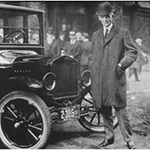The UK has some of the oldest – and leakiest – housing stock in the western world. The vast majority of it will still be standing in 2050, the year by which the government has set itself a target to cut UK carbon emissions by 80% in comparison to 1990 levels.
This would require retrofitting around 25 million homes to become considerably more energy efficient – a vast job that would need 3,000 homes to be kitted out every day for the next 37 years. The government needs to persuade householders and landlords to do the right thing and invest in their properties. Not such an easy task – as the abject failure of the Green Deal, the policy initiative that essentially bears this responsibility, has already demonstrated.
Any mass behaviour change takes time – especially when it’s perceived to be simply “worthy” more than “essential”. There’s no value in harping on about the Green Deal’s problems; we need ideas to make it work. We need to resurrect the idea of consequential improvements, which would have required those extending their home to spend a further 10% on upgrading the building’s energy efficiency. Having been suggested in 2006, it was enthusiastically supported until being dropped again last month. An appeal was rejected last month.
This approach targets those with the funds and the will to improve their homes. It makes a clear link between official planning permission and improving home energy ratings. Building firms doing the proposed work get additional business, creating jobs. And most important of all, piggybacking on improvements would create instant awareness and the potential for large-scale acceptance of the importance of retrofitting.
Once re-interpreted and wrongly labelled as the Conservatory Tax, driving up the cost of middle England’s home improvements, it was seen by politicians as an obvious vote loser. But the scale and significance of the retrofit issue and the lack of take-up for current initiatives like the Green Deal means policy makers need to take courage.
Another sensible way forward would be to look at zero VAT schemes for approved low carbon renovation projects. Currently no VAT is levied on new domestic buildings, something that could surely be extended, if only for a trial few years, to encourage more people to invest in insulating their homes against high future energy prices.
There also needs to be more attention paid to the issue of trust among occupiers, and how we get more people to invest in the long-term benefits (including comfort and health) from more energy efficient homes and the resulting lower energy costs. Who do we really trust to advise us on what will be effective and actually carry out the work? With this in mind, involving the big energy firms themselves, as well as a sector of businesses associated with miss-selling PPI or double-glazing may not be helpful.
What’s needed is more thinking and understanding of what has worked in other parts of the world in building trust in retrofit. San Francisco and other US local authorities use the PACE (Property Assessed Clean Energy) framework. Scarcely a week passes without news that another US local government or state government has authorised a PACE program. In July for instance, the City of Milwaukee announced the launch of a $100-million PACE programme in partnership with California based Clean Fund and Johnson Controls. At the last count, 30 US states have passed PACE-enabling legislation.
We have something to learn from the US in terms of building trust. After all, how many homes did we retrofit today?




Comments are disabled